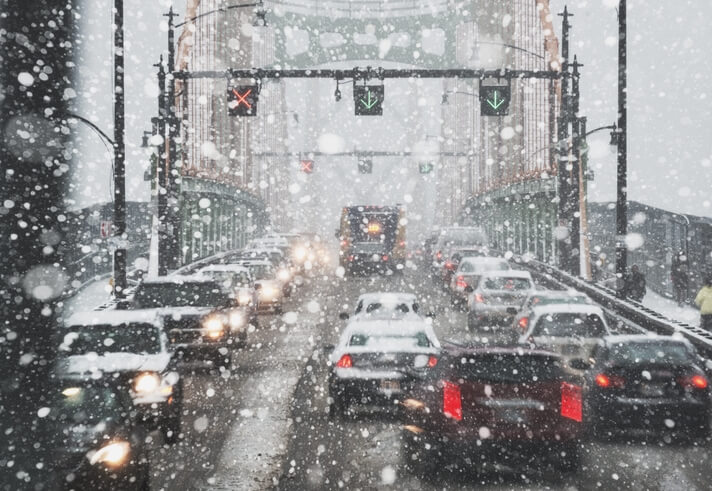How to drive safe in the winter

December 23, 2019. Winter driving is a challenge but anticipating problems and avoiding them as much as possible goes a long way towards making it safer.
Drive at a safe speed for the road conditions.
- Posted speed limits are for good driving conditions and you need to lower your speed if the road is slippery or visibility is reduced.
Your car might start to slide
- If you lose traction and the vehicle starts to slide, take your foot off the accelerator, look where you want the car to go, and let it slow down.
- Trying to steer or slam on the brakes when the car is already sliding will only make it worse.
Put winter tires on your car
- Summer tires put you at risk of an accident because they are not made for winter conditions.
Make sure you can see and others can see you
- Make sure your windows and windshield are free of snow and mud and that your windshield wipers are not creating streaks across your windshield. Also, make sure your lights are all working and free of snow.
Avoid driving in blizzards and adverse conditions if you can
- If you must drive, give yourself extra time and let someone know where you are going and when you expect to get there so they can send help if you do not arrive.
- If it is not safe to drive, pull over until it is or go to safety.
Brake early
- Increase your following distance behind other vehicles
- Brake earlier than when road conditions are good
- If you have ABS, do not pump the brakes. To make an emergency stop, press the brake hard and quickly.
- If you do not have ABS, brake just hard enough to not lock the wheels. If the wheels lock, release the brakes just enough to fix it.
Make sure your phone is charged
- You could get stuck in the snow or need help for another reason so make sure you have a charged cell phone with you.


.jpg?300x300)
